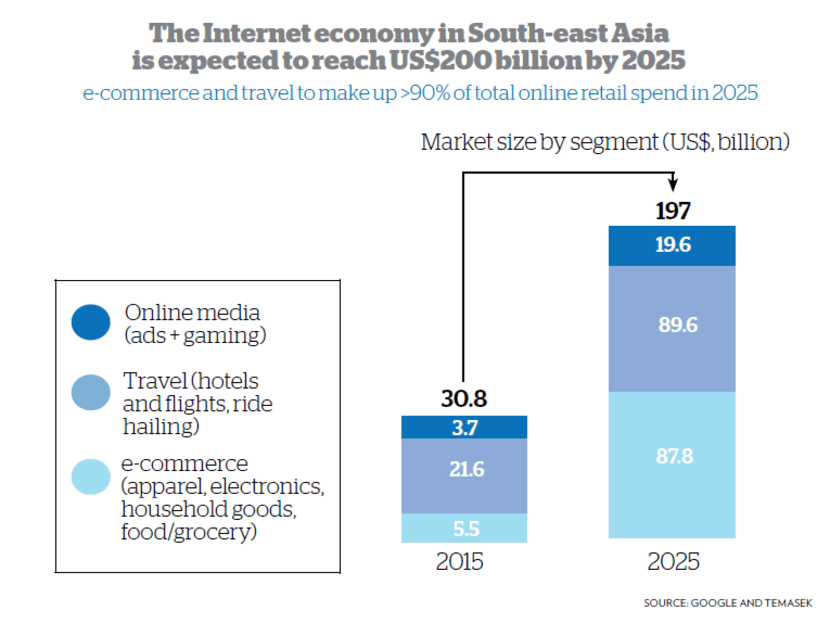S’pore e-commerce market will grow to S$7.5b in 10 years: Report
SINGAPORE — Within 10 years, the size of Singapore’s e-commerce market will grow more than five times to be worth US$5.4 billion (S$7.5 billion) — more than what the casino industry here was valued at (US$4 billion) last year — predicted Internet giant Google and Singapore state investment firm Temasek Holdings.

Mr Fajrin Rasyid co-founder of online marketplace start-up Bukalapak, which has created its own payment platform in partnership with two major convenience store chains in Indonesia. Photo: Facebook page of Fajrin Rasyid
SINGAPORE — Within 10 years, the size of Singapore’s e-commerce market will grow more than five times to be worth US$5.4 billion (S$7.5 billion) — more than what the casino industry here was valued at (US$4 billion) last year — predicted Internet giant Google and Singapore state investment firm Temasek Holdings.
By then, e-commerce would make up 6.7 per cent of all retail here, triple that of the 2.1 per cent figure last year, according to their joint report released on Tuesday (May 24).
This promising outlook for the e-commerce market, which has taken off in a big way in Singapore, is also being predicted in five other South-east Asian countries, with Indonesia, Vietnam, the Philippines, Thailand and Malaysia also forecast to have e-commerce markets worth more than US$5 billion by 2025. In particular, e-commerce is expected to take up 8 per cent of all retail in Indonesia, a rate that will see it dominate 52 per cent of the South-east Asian market.
Overall, found the report, South-east Asia’s Internet economy is expected to surge to US$200 billion by 2025, driven mostly by the growth of e-commerce, online media and online travel, as more people gain access to the Internet. It will also be driven by a young population with 70 per cent under the age of 40, lack of big-box retailers, and a rapidly growing middle class.
The report’s forecast is based on a few assumptions though, including that an additional US$40-50 billion is invested in the Internet economy over the next 10 years.
Certain challenges to realising the growth were also flagged in the report. These include the large population still without bank accounts, low Internet speeds and poor road and rail networks. The report also pointed out a lack of IT talent and a significant amount of fraudulent activity which is causing consumers to be wary of making transactions online.

Market players interviewed said they are trying to get around these challenges. For instance, online marketplace start-up Bukalapak, which is active in Indonesia, has created its own payment platform in partnership with two major convenience store chains there, said the firm’s co-founder, Fajrin Rasyid, 29.
“Customers can go to these stores to pay for their items online, or to top up their e-wallets, which can be used to pay for their transactions. We also accept cash on delivery,” he said, noting that only 5 per cent of Indonesians have credit cards, and 30 per cent have bank accounts. Mr Rasyid said his start-up has also addressed the issue of slow Internet speeds by ensuring a fast loading time for the mobile site of the marketplace, as many customers shop on their mobile phones.
The report by Google and Temasek also examined the venture capital scene in South-east Asia, and found that as of last year, Singapore is the most active country, capturing 37 per cent of the total number of deals and 72 per cent of total deal value.
Two start-ups got much of the deal activity: Private-hire car firm Grab and online property portal Property Guru, which recorded investments of about US$350 million and US$130 million, respectively.
Overall, e-commerce and logistics got 61.4 per cent of all investments in the region from 2010 to 2015. Last year, a total of US$1.1 billion was invested in South-east Asia, with a total of 355 deals made.






